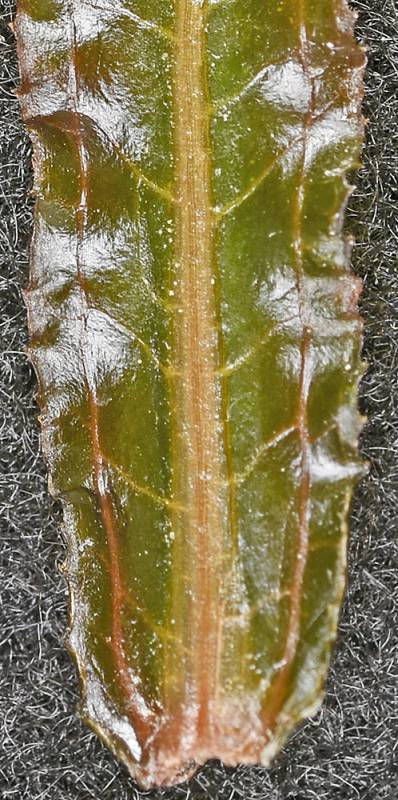Curly-leaf pondweed identification and control
Information about the noxious weed, curly-leaf pondweed. Curly-leaf pondweed is also known by its Latin name, Potamogeton crispus.
About this weed
Curly-leaf pondweed is a non-regulated Class C noxious weed. This means due to how widespread it is, property owners are not required to control this species on their property, though it is encouraged.
Curly-leaf pondweed is known as Potamogeton crispus and it is in the pondweed family.

Why it’s a problem
Curly-leaf pondweed overtakes habitat and resources from native plants. This limits biodiversity and does not provide suitable shelter, food, and nesting habitat for native animals. Its dense mats at the water surface can obstruct water activities.
Plant description
Curly-leaf pondweed is an underwater rooted plant from Eurasia. The plant may mat at the surface, but it does not have true floating leaves. It is common in ponds with hard (mineral heavy) nutrient rich water. It can be found in shallow to deep, still, or flowing water, and tolerates disturbances.
Curly-leaf pondweed has distinctive crinkled leaves that alternate along the stem. The leaves have finely toothed edges and an obvious mid-vein. They are directly attached to the stem and become denser towards the end of the stem. Its coloration varies from olive-green to reddish brown.
The flower stalk grows to about one inch tall and appears reddish brown in the water but is green upon closer examination. It grows up above the water surface, typically in early summer.
It reproduces through turions (small buds capable of growing into a full plant), through rhizomes (root system that spreads outwards and can grow new stems), and seeds to a lesser extent. The turions are brown, roughly a half-inch long and look like small sharp pinecones. The rhizomes are thick and pale yellow. Many plants can be connected to one rhizome.
Turions sprout in the fall, and it is often the first pondweed to come up in the spring. Generally, it flowers, fruits, and produces turions in June before dying back in mid-summer.




Be aware of look-alike plants
Curly-leaf pondweed may be confused with Richardson’s pondweed. Richardson’s pondweed has longer wider leaves with more pointed tips and clasping leaf bases. Unlike curly-leaf, Richardson’s pondweed is native to Washington and not harmful to our state’s ecosystems.
When in doubt, take photos and report them on iNaturalist.
What to do if you find it
Because curly-leaf pondweed is so widespread, property owners in King County are not required to control it. King County is not generally tracking infestations. We can provide advice on how to control curly-leaf pondweed, but there is generally no legal requirement to do so.
The King County Noxious Weed Control Board encourages property owners to remove curly-leaf pondweed where possible, and to avoid introducing it to new landscapes.
Control methods
We recommend using a combination of methods to control weeds. In areas with few weeds, it is important to act quickly before they become harder to control. Make a long-term plan as it often takes several years to get rid of most weeds. Start in the least infested areas first and then move into more heavily infested areas.
Manual control
Aquatic plant control that does not involve herbicide often requires a (free) permit. The rules and regulations for this type of removal will depend on your circumstance, please visit the WA Dept Fish and Wildlife for access to their Aquatic Plants & Fish Pamphlet and guidance on how to use it properly.
Curly-leaf pondweed can be controlled by raking or cutting. This is most effective if done in the spring before seeds appear above the water. This can be very effective in small ponds and has the added benefit of removing the excess nutrients.
Chemical control
Stay safe when using herbicide:
- Always read the label before use.
- Wear a long-sleeved shirt, long pants, shoes, and eye protection.
- Follow state and local regulations.
Many aquatic herbicides are effective in controlling curly-leaf pondweed. Diquat, endothall, and fluoridone are a few examples. Herbicide may need to be applied every year or even multiple times per year. This is especially true if the underlying nutrient issue is not resolved.
Chemical treatments should be done early in the growing season before the plants cover a large portion of the pond. Treating a severe infestation may cause the dissolved oxygen level to drop, killing fish.
Avoid spraying where there is a chance that herbicide will enter a waterway or wetland unless you are using a state-approved aquatic herbicide and have the required permits and licenses to do so. Use of pesticides in water is regulated in Washington state. See Washington Department of Ecology Aquatic Pesticide Permits for details.
For more information or a site-specific recommendation in King County, contact the noxious weed program. For information in other locations, contact your local weed board or extension office.
Disposal instructions
Plants removed from the pond should be disposed of away from the ponds edge. This is so that wind or runoff cannot transport the plant or seeds back into the water.
Noxious Weed Disposal - Washington State Noxious Weed Control Board

 Translate
Translate